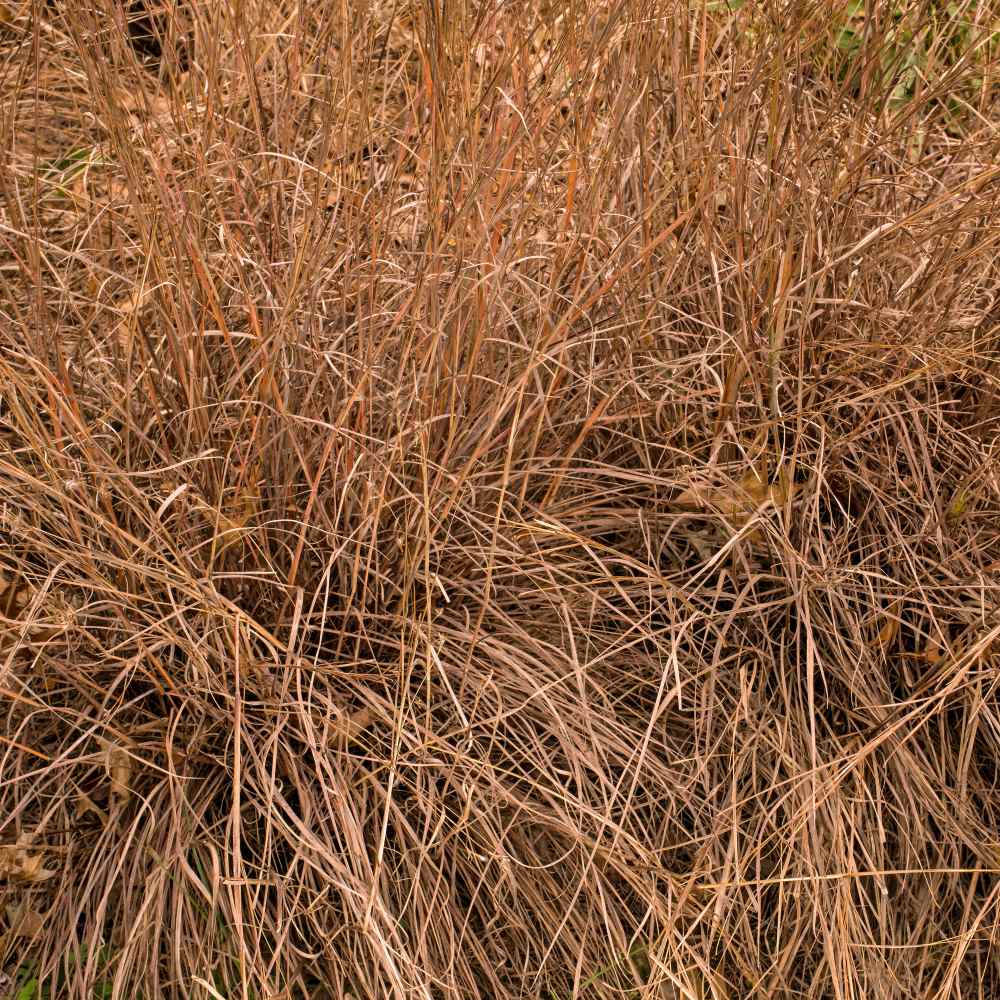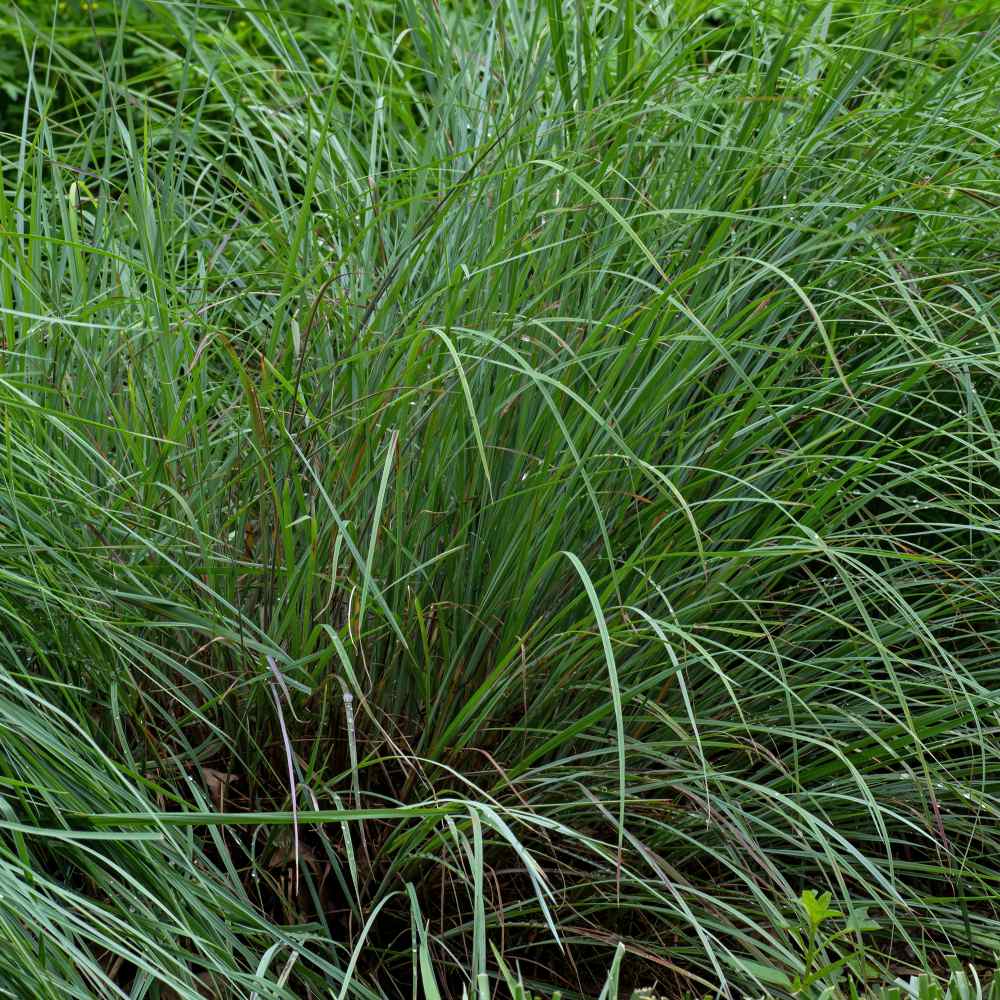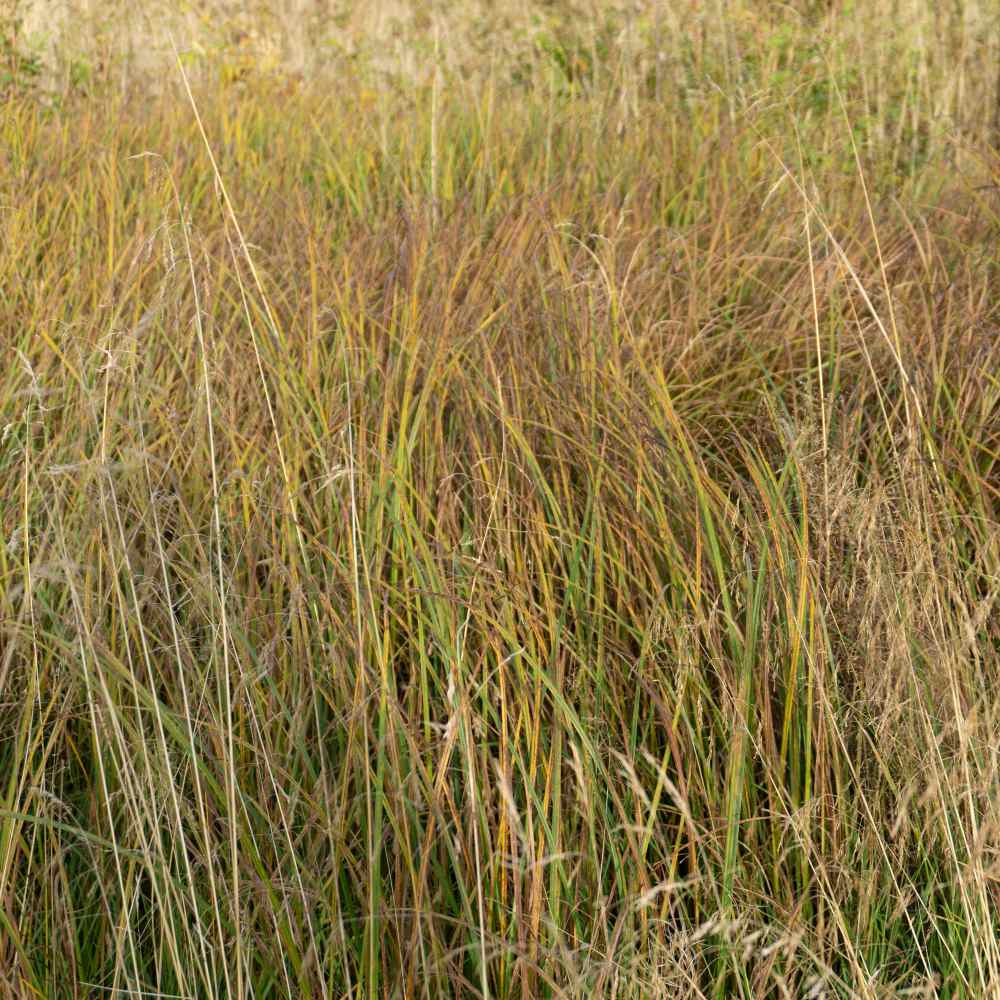Bluestem Seeds - Little

Grass Specifications
Season: Perennial
USDA Zones: 3 - 10
Height: 24 - 36 inches
Width: 24 - 36 inches
Foliage Color: Silvery Blue
Growth Rate: Moderate
Fall Color: Coppery Red
Soil Requirement: Sandy to Loamy, well-drained, pH 5.5 to 6.0
Environment: Full sun
Latin Name: Schizachyrium scoparium
Planting Directions
Temperature: 60
Average Germ Time: 21 - 28 days
Light Required: No
Depth: 1/4 to 1/2 inch
Sowing Rate: 8 - 12 PLS lbs per acre or 1/2 - 1 PLS lb per 1000 square feet for ornamental plantings.
Moisture: Keep seeds moist until germination
Care & Maintenance: Bluestem



Little Bluestem (Schizachyrium scoparium) - Little Bluestem grass seed easily grows to produce one of the most popular ornamental grasses on the market today, and it is widely used in landscaping. Little Bluestem native grass is often used in wildflower plantings because it is short and mixes well with wildflowers for increased attraction. This native prairie grass has a wide range of colors which are various shades of blue and green hues. These colors turn to a striking bright red in fall and are are topped by fluffy silvery-white seed stalks. Little Bluestem ornamental grass can reach heights of two to four feet tall and a patch of this waving in the wind is truly a wonderful sight for your landscape.
Little Bluestem is a vigorous, long-lived native bunch grass, widely distributed over the United States; but most prevalent in the Central and Southern Great Plains. It is usually found associated with Big Bluestem native grass. It is more drought resistant that Big Bluestem, and a smaller plant - usually not reaching much over 3 feet. The leaves are up to 8 inches long, and not over 0.25 inch wide. It furnishes dependable grazing and cured hay, but is not highly palatable. It is especially valuable for erosion control.
Seeding Rate
8 - 12 PLS lbs per acre or 1/2 - 1 PLS lb per 1000 square feet for ornamental plantings.
PLS pounds - Pure Live Seed, or PLS, is the percentage of viable seed in a given lot. It is calculated by multiplying the purity percentage by the total germination percentage. For example, 95% purity multiplied by 85% total germination equals a 80.75% PLS. This means that out of every bulk pound of that bag of native grass seed that you plant, 80.75% of it is actually seed of that tagged variety and has the potential to germinate. Weights listed are bulk pounds.
Specifications
Type: Perennial
Mature Height: 1 1/2 - 3 feet
Soil Type: Tolerate poor soil
Mature Spread: 2 - 2 1/2 feet
Flower Color: Tan
Mature Form: Upright - Clump
Foliage Color: Silver Green
Growth Rate: Moderate
Fall Color: Orange/Red
Sun Exposure: Partial sun
Moisture Requirements: Adaptable to dry
Zones: 3 - 10
Uses of Little Bluestem
Pasture/range/hayland: Little Bluestem is a fair forage species and is readily grazed by livestock, deer, and elk. It is also suitable for hay.
Erosion control: Because of its growth habit and adaptability to a wide range of soil conditions, Little Bluestem native grass is useful as a component of re-vegetation mixes that use native grasses. It is especially well-suited for use on thin upland range sites.
Wildlife: Little Bluestem seed is eaten by songbirds and upland game birds. The plant provides cover for ground birds and small mammals.
Landscaping: With its blue-green leaves during the growing season and attractive rusty color with white fluffy seed heads in the fall, Little Bluestem is useful in ornamental plantings.
Adaptation and Distribution of Little Bluestem
Little Bluestem is one of the most widely distributed native grasses in North America. It will grow on a wide variety of soils but is very well adapted to well-drained, medium to dry, infertile soils. The plant has excellent drought and fair shade tolerance, and fair to poor flood tolerance. It grows preferentially on sites with pH 6.0 and slightly higher. Little Bluestem is distributed throughout the United States.
How To Grow Little Bluestem Grass From Seed
Little Bluestem native grass seed should be seeded as early in the spring as possible. Where no-till is used due to slope, stoniness, or other reasons, sod control should be performed in the fall to permit early spring planting. The seeding rate for establishing a pure stand with broadcast or no-till methods should be 8 to 12 pounds PLS per acre. When drills are used to plant, debearded seed must be utilized unless the drill has a chaffy seed box. When the seed is broadcast, a packer should be utilized to firm the seedbed and incorporate the seed 1/4 inch. No nitrogen fertilizer should be applied during the establishment year unless no weed competition is expected. If pH is below 5.5, lime is recommended during site preparation or the fall prior to no-till plantings.
For critical area seeding, the preferred method of planting is drilling, but if this is not possible, an acceptable alternative method is broadcasting the seed (typically in a mix with other warm season native grasses) and ‘tracking’ it in with a bulldozer. The dozer moves up and down slope, off-setting each pass until the entire area is covered with tracks. Seedings should be made as early as possible in the spring on sands and gravels, without mulching. Moderate levels of N, P, and K are sufficient for establishment, and soil pH should be 5.5 to 6.0. Cultipacker-type planters are not suitable for this species.
Control of competition is necessary for successful stand establishment. High mowing (above the bluestem seedlings) is a common method of weed control. Once established, poor stands can be rehabilitated by using proper management practices, such as controlled grazing, application of recommended rates of herbicides and fertilizer, and prescribed spring burning, where permitted.
Do not graze a forage planting of native grasses during the year of establishment. During subsequent growing seasons, harvesting by controlled grazing or haying is possible on good stands. Do not remove more than 50% of the current year’s growth from plants. No cropping should occur below 8 inches or within 1 month of anticipated frosts. Grazing of competing cool season grasses after frost in the fall and before the Little Bluestem is 1 inch tall in the spring is desirable.
Little Bluestem is a medium height grass with coarse stems. As a warm season native grass it begins growth in late spring and continues through the hot summer period until the first killing frost. Little Bluestem has very flat bluish basal shoots. Plants are green, but often purplish at base of stem and the entire plant has a reddish cast after frost. Leaves are smooth, but frequently are covered with hair at the base next to the sheath. Leaves tend to fold with maturity. Seed head clusters about three inches long. The cluster stems are hairy. Plant height varies from 18 inches on droughty sites to 3 feet on deep, fertile soils. There are approximately 255,000 seeds per pound of this native grass.































